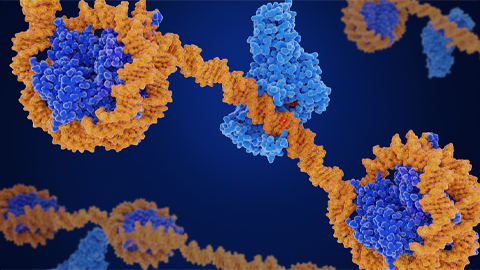
Our coolest superpower: Seeing all the atoms
Wouldn't it be great if we could just see all the atoms of all the molecules, any time we wanted?
If we were able to sample something — anything — and just tell what it's made of? Where all its atoms were? Which ones were connected or ready to react?
In about the span of a century, scientists have learned more about molecules and their components than we ever thought possible. In some cases, we can already pick up a bit of dust or a tiny droplet and see where the atoms of its resident molecules are. Or we can calculate predicted structures that are so accurate they can be used to predict function.
In old comic books, this kind of X-ray vision was the stuff of superheroes. Someday, in the not-too-distant future, we might all have it.
Submit an abstract
Abstract submission begins Sept. 14. If you submit by Oct. 12, you'll get a decision by Nov. 1. The regular submission deadline is Nov. 30. See the categories.
Join us for a glimpse into the challenges and opportunities of building that future, so we can all scrutinize, predict, build, target and react to all the molecules.
Keywords: Structure, cryo-electron microscopy, microcrystal electron diffraction, alpha fold, tomography, artificial intelligence.
Who should attend: Absolutely everyone should attend. Who doesn't want a superpower?
Theme song: “Mosaic” by Art Blakey and the Jazz Messengers
This session is literally powered by electrons and photons.
New frontiers in structural biology
The rise of molecular assemblies

Chair: Rebecca Vorhees
Sarah Shahmoradian, University of Texas Southwestern Medical Center
Lorena Saelices, University of Texas Southwestern Medical Center
New approaches enabling structural science
Chair: Jose Rodriguez
Roger Castells–Graells, University of California, Los Angeles
Hosea Nelson, California Institute of Technology
Hong Zhou, University of California, Los Angeles
Seeing the chemistry of life
Chair: Hosea Nelson
Lindsey R. F. Backman, Whitehead Institute for Biomedical Research
Douglas Rees, California Institute of Technology
Enjoy reading ASBMB Today?
Become a member to receive the print edition four times a year and the digital edition monthly.
Learn moreGet the latest from ASBMB Today
Enter your email address, and we’ll send you a weekly email with recent articles, interviews and more.
Latest in Science
Science highlights or most popular articles

CRISPR epigenome editor offers potential gene therapies
Scientists from the University of California, Berkeley, created a system to modify the methylation patterns in neurons. They presented their findings at ASBMB 2025.

Finding a symphony among complex molecules
MOSAIC scholar Stanna Dorn uses total synthesis to recreate rare bacterial natural products with potential therapeutic applications.

E-cigarettes drive irreversible lung damage via free radicals
E-cigarettes are often thought to be safer because they lack many of the carcinogens found in tobacco cigarettes. However, scientists recently found that exposure to e-cigarette vapor can cause severe, irreversible lung damage.

Using DNA barcodes to capture local biodiversity
Undergraduate at the University of California, Santa Barbara, leads citizen science initiative to engage the public in DNA barcoding to catalog local biodiversity, fostering community involvement in science.

Targeting Toxoplasma parasites and their protein accomplices
Researchers identify that a Toxoplasma gondii enzyme drives parasite's survival. Read more about this recent study from the Journal of Lipid Research.

Scavenger protein receptor aids the transport of lipoproteins
Scientists elucidated how two major splice variants of scavenger receptors affect cellular localization in endothelial cells. Read more about this recent study from the Journal of Lipid Research.


